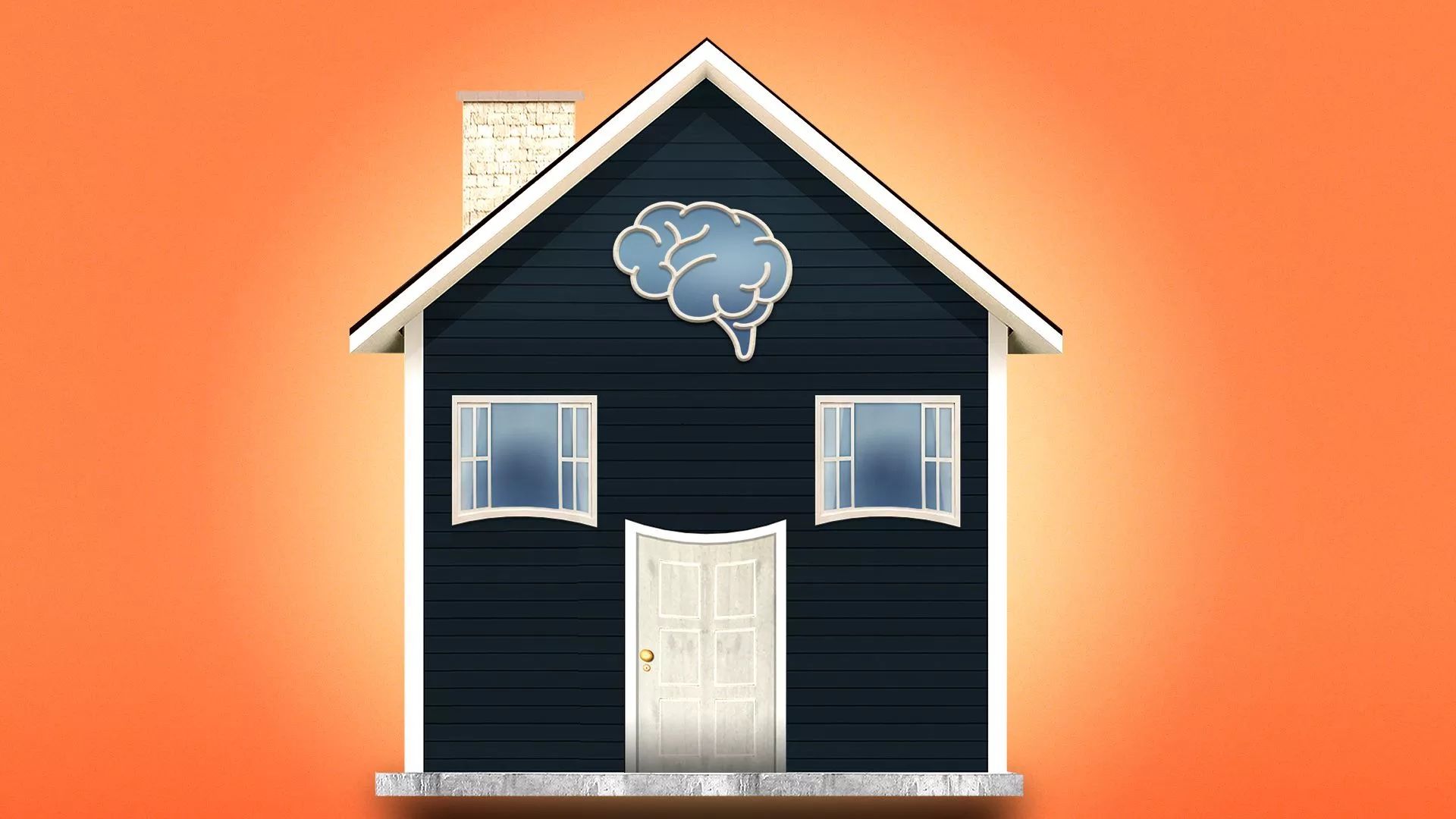| |
| |
| |
| Presented By JPMorgan Chase |
| |
| Axios AM |
| By Mike Allen ·Mar 25, 2022 |
| Happy Friday! Today's Smart Brevity™ count: 1,291 words ... 5 mins. Edited by Zachary Basu. ⚡ Breaking: President Biden, who heads to Poland today, unveiled a new deal in Brussels to supply the EU with American liquefied natural gas as part of a push to wean Europe off Russian energy. |
| |
| |
| 1 big thing: Supreme Court charade |
 |
|
| Illustration: Aïda Amer/Axios |
| |
| The Supreme Court keeps getting more powerful, but confirmation hearings for new justices consistently fail to match the gravity of what's at stake, Axios' Sam Baker writes. - Why it matters: Nine people have the final say on all the biggest and most controversial issues in America — abortion, marriage, health care, immigration, voting rights, the boundaries of free speech. But the confirmation process rarely shines much new light.
Republicans pelted Judge Ketanji Brown Jackson this week with questions about culture-war issues that are a lot more relevant to the midterms than to the court's work. - "Do you agree … that babies are racist?" Sen. Ted Cruz (R-Texas) — who held up a children's book called "Antiracist Baby" — asked during a series of questions about critical race theory and schools.
- "Can you provide a definition for the word 'woman'?" Sen. Marsha Blackburn (R-Tenn.) asked at the end of a 13-hour hearing on Tuesday. Jackson replied: "I can't. ... I'm not a biologist."
Flashback: During Justice Amy Coney Barrett's hearings, Democrats spent a great deal of time focusing on health care — even invoking personal stories of people covered by the Affordable Care Act. - And, yes, there was a case pending before the Supreme Court about the ACA, just as there may one day be another case about trans rights. But there was also an election just a few months away, in which the legal threat to the ACA was a big part of Democrats' message.
Television, followed by social media, turned these serious-business hearings into an irresistible platform for senators to indulge personal or partisan ambitions. - Nominees have learned the lesson from Robert Bork, whose nomination by President Ronald Reagan was rejected in 1987 because of the many hardline opinions the judge was willing to discuss publicly.
Years before she became a Supreme Court justice, then-professor Elena Kagan had particularly tough criticism for the say-nothing era of confirmation hearings, calling them "a vapid and hollow charade." - "Such hearings serve little educative function, except perhaps to reinforce lessons of cynicism that citizens often glean from government," Kagan wrote in 1995.
It's hard to argue the process has gotten better. |
    |
| |
| |
| 2. Ginni Thomas called 2020 election a "Heist" |
 |
|
| Screenshot: CBS News |
| |
| Text messages now in the possession of the Jan. 6 select committee show Virginia "Ginni" Thomas, a conservative activist and the wife of Supreme Court Justice Clarence Thomas, repeatedly urging former Trump chief of staff Mark Meadows to overturn the results of the 2020 election. - Why it matters: "The messages — 29 in all — reveal an extraordinary pipeline between [Thomas] and President Donald Trump's top aide during a period when Trump and his allies were vowing to go to the Supreme Court in an effort to negate the election results," write The Washington Post's Bob Woodward and CBS News' Robert Costa, who first reported on the texts.
"The messages, which do not directly reference Justice Thomas or the Supreme Court, show for the first time how Ginni Thomas used her access to Trump's inner circle to promote and seek to guide the president's strategy to overturn the election results — and how receptive and grateful Meadows said he was to receive her advice." |
    |
| |
| |
| 3. Smart homes get closer |
 |
|
| Illustration: Annelise Capossela/Axios |
| |
| The promise of a "smart home" — where you effortlessly tell your appliances what to do — is edging closer to fruition, Axios' Jennifer A. Kingson writes for our What's Next newsletter. - Why it matters: When we're finally able to take full advantage of smart home technology, everything from lights and garage doors to entertainment and security systems could work together seamlessly.
Reality check: That's the dream. For now, it takes a good bit of expertise to set things up and get gadgets from competing brands to play together. 👀 What we're watching: Makers of internet of things (IoT) devices for the home are pinning their hopes on a forthcoming technology standard, Matter, which aims to ensure the interoperability of smart home devices. - Device manufacturers have pledged to use Matter in their future products, so consumers will know when they see the Matter logo that they can easily add the product to their home setup.
How it should work: Sensors will be able to detect if there's a leak in your plumbing, or if you left the stove on by accident. - They could even alert you about your elderly parent in another state getting up in the morning (through a motion sensor near their bed), opening the medicine cabinet and taking a shower.
But technology glitches include appliances that only recognize one family member's voice. And privacy concerns are a third rail. |
    |
| |
| |
| A message from JPMorgan Chase |
| A great equalizer for generational wealth is homeownership |
| |
 |
| |
| JPMorgan Chase's $30B racial equity commitment includes policy recommendations and $8B to increase homeownership and originate 40,000 home purchase loans for Black and Latino families. The idea: Build an inclusive economy where underserved communities can more easily achieve homeownership. |
| |
| |
| 4. Mapped: America's COVID shuffle |
 Data: Census Bureau. Chart: Jared Whalen/Axios In new U.S. census data showing migration from July 2020 to July 2021, five of the top 10 counties in numeric growth were in Texas — Collin, Fort Bend, Williamson, Denton and Montgomery counties. - The others were in Arizona (Maricopa County) ... California (Riverside County) ... Florida (Polk and Lee counties) ... and Utah (Utah County).
- The three largest numeric losers were L.A. County ... New York County (Manhattan) ... and Cook County, Ill., which includes Chicago.
On a percentage basis (mapped above), the top gainer was Kaufman County, Texas (east of Dallas). The biggest loser was Manhattan. |
    |
| |
| |
| 5. Nuclear power gets new shine |
 |
|
| Cover: Ricardo Rey/The Economist |
| |
| "As the folly of relying on Russia becomes clear, nuclear power is back in fashion," The Economist writes (subscription): - "France plans to construct six new plants and is aiming for 'total energy independence.'"
- "On March 21st Britain said it would build a new generation of reactors at 'warp speed.'"
Why it matters: "[G]eopolitics will hasten the climate-driven energy transition." |
    |
| |
| |
| 6. Poll: Younger Americans bullish on crypto |
 Data: Quinnipiac University. Chart: Simran Parwani/Axios Americans under 50 are bullish on the future of cryptocurrencies, according to a Quinnipiac University poll out yesterday. - "That signals the marketing is working as crypto companies target sports advertising in a push to go mainstream," Quinnipiac finance professor Osman Kilic said.
Fewer than 1 in 5 (16%) of the 1,936 polled (margin of error: ±2.2 points) say they currently own cryptocurrency. 74% say they have never bought it. 8% say they owned it in the past, but no longer do. |
    |
| |
| |
| 7. Axios Local grows to 60+ on-the-ground journalists |
 |
|
| Current Axios local cities + expansions by this summer. |
| |
| Today I'm writing Axios AM in Charlotte, where we're having a two-day retreat with Axios Local journalists from around the country. - Axios publisher Nicholas Johnston has this progress report:
A little more than two years ago, Axios Local was just an idea to see if we could bring smart, trustworthy coverage to neighborhoods and communities. Today we're more than 60 journalists, in soon-to-be 25 cities across the country. What's next: We're talking with investors and exploring partnerships with nonprofits to bring journalists to a wider range of cities. - We're expanding the leadership team, including Axios Local executive editor Jamie Stockwell, a proud Texan and former managing editor of the San Antonio Express-News who joined us last week from the National Desk of The New York Times.
Click here to read our Axios Local Manifesto, or sign up for a newsletter. |
    |
| |
| |
| 8. 📷 Parting shot |
| Photo Greg Lovett/The Palm Beach Post via USA Today Network The 40th annual Palm Beach International Boat Show, which opened yesterday, runs through Sunday. |
    |
| |
| |
| A message from JPMorgan Chase |
| Chase helps Chicago artist buy a home, after years of trying |
| |
 |
| |
| Chicago artist P. Scott wasn't sure he'd ever own a home. But with support from Chase and a $5,000 grant to help with upfront costs, his dream came true. Upfront costs are a big barrier to homeownership for Black and Latino families, particularly in cities with a big racial wealth gap. Read his story. |
| |
| 📬 Invite your friends to sign up here to get their daily essentials — Axios AM, PM and Finish Line. |
 | It's called Smart Brevity®. Over 200 orgs use it — in a tool called Axios HQ — to drive productivity with clearer workplace communications. | | |













No comments:
Post a Comment